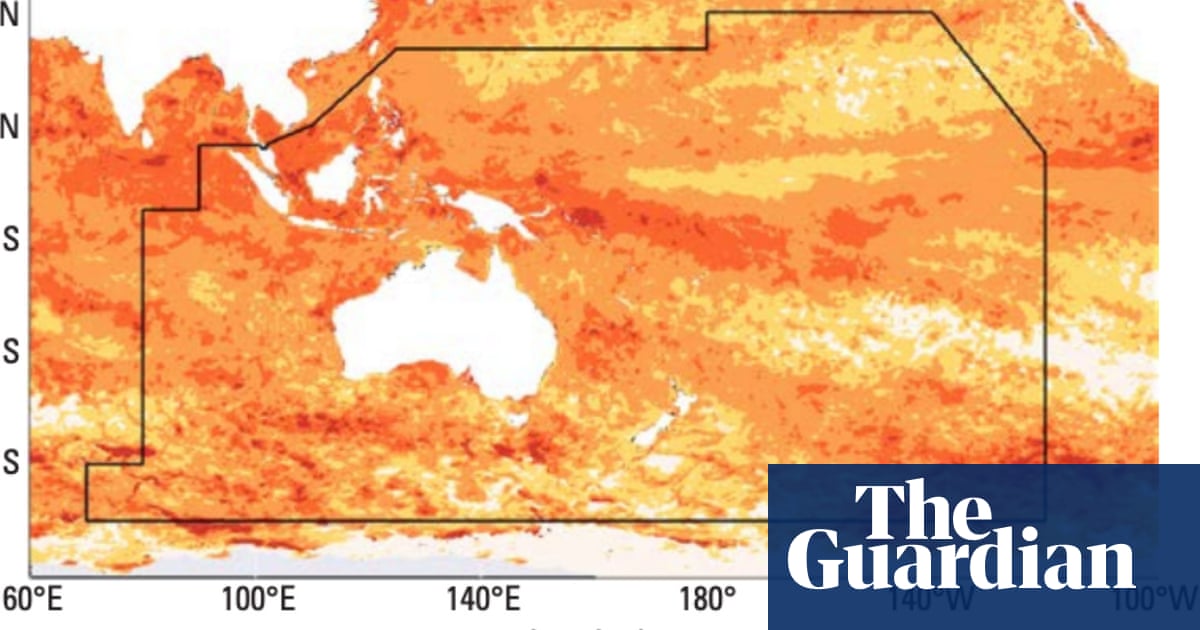Marine Heatwave Engulfs Southeast Asia and the Pacific: A Call to Action

In a startling report released in 2024 by the World Meteorological Organization (WMO), it has been revealed that an astonishing area of almost 40 million square kilometers of ocean surrounding Southeast Asia and the Pacific has been engulfed in a marine heatwave. This expansive region is over five times the size of Australia and has experienced unprecedented temperature increases, raising alarms among scientists and environmentalists alike.
The WMO scientists attributed this record-breaking heat, both on land and in the ocean, primarily to the ongoing climate crisis. The report indicated that these extreme temperatures coincided with a series of devastating weather events across the region, including deadly landslides in the Philippines, severe flooding in Australia, and alarming glacier loss in Indonesia.
According to the WMO’s State of the Climate report, the region's average temperature was recorded as 0.48°C higher than the average levels noted between 1991 and 2020. This significant rise underscores the urgent need for action against climate change.
Satellite measurements have also confirmed that sea levels in this area are rising at an alarming rate of almost 4mm per year, which is considerably higher than the global average of 3.5mm. This rise poses a severe threat to low-lying island nations, as emphasized by WMO Secretary-General, Professor Celeste Saulo.
Professor Saulo stated, "Ocean heat and acidification have combined to inflict long-lasting damage to marine ecosystems and economies. Sea-level rise is an existential threat to entire island nations. It is increasingly evident that we are fast running out of time to turn the tide." Her comments reflect the growing consensus among scientists regarding the need for immediate and substantial climate action.
Several extreme weather events coincided with the heatwave in 2024, as the report documented:
- Extreme rainfall in the Philippines during January and February led to catastrophic flooding and landslides, which resulted in the loss of at least 93 lives.
- An early-season heatwave in Australia resulted in record-high temperatures in August across the central part of the country.
- Major flooding in Singapore and Malaysia displaced around 137,000 people and claimed six lives.
- Flash floods hit the Indonesian island of Sumatra in March, and northern Australia experienced significant flooding at the year's onset.
- Rapid glacier loss was reported on New Guinea Island, Indonesia, with projections indicating total ice loss could occur by 2026 or shortly thereafter.
- The Philippines endured an onslaught of 12 tropical cyclones—double the average number—resulting in an estimated damage cost of $430 million.
- The snow season in Australia concluded abnormally early, raising concerns among climate scientists.
Ben Churchill, the WMO director for the region, emphasized the report’s implications, stating, "This is a message for stronger climate action. This report shows we’re seeing things we have never seen before." His assertion highlights the need for global commitment to combat climate change.
In the earlier months of 2024, the report noted that nearly 40 million square kilometers of the region’s ocean surface experienced moderate to strong heatwaves, raising serious concerns about marine biodiversity. The ocean heat also instigated the fifth mass coral bleaching event across Australia’s Great Barrier Reef since 2016, leading to widespread coral death and threatening the intricate ecosystems of the reef.
Associate Professor Alex Sen Gupta, a climate scientist at the University of New South Wales, described the heatwave as "pretty remarkable" and a significant contributor to a record-breaking surge in global ocean temperatures that began in 2023. He stated, "We’ve really never seen anything like it and we’re struggling to explain why we saw such a big jump." This dramatic shift in ocean temperatures raises critical questions about the stability of marine organisms that are unable to adapt to such rapid changes.
The stress induced by the heatwave on oceanic species is concerning, as many organisms possess temperature thresholds beyond which they cannot survive. As Professor Sen Gupta noted, "If you go beyond them, the organism starts to fail – they either move or die." This stark reality serves as a wake-up call for immediate climate action and highlights the urgency of finding solutions to mitigate the impacts of climate change.
























